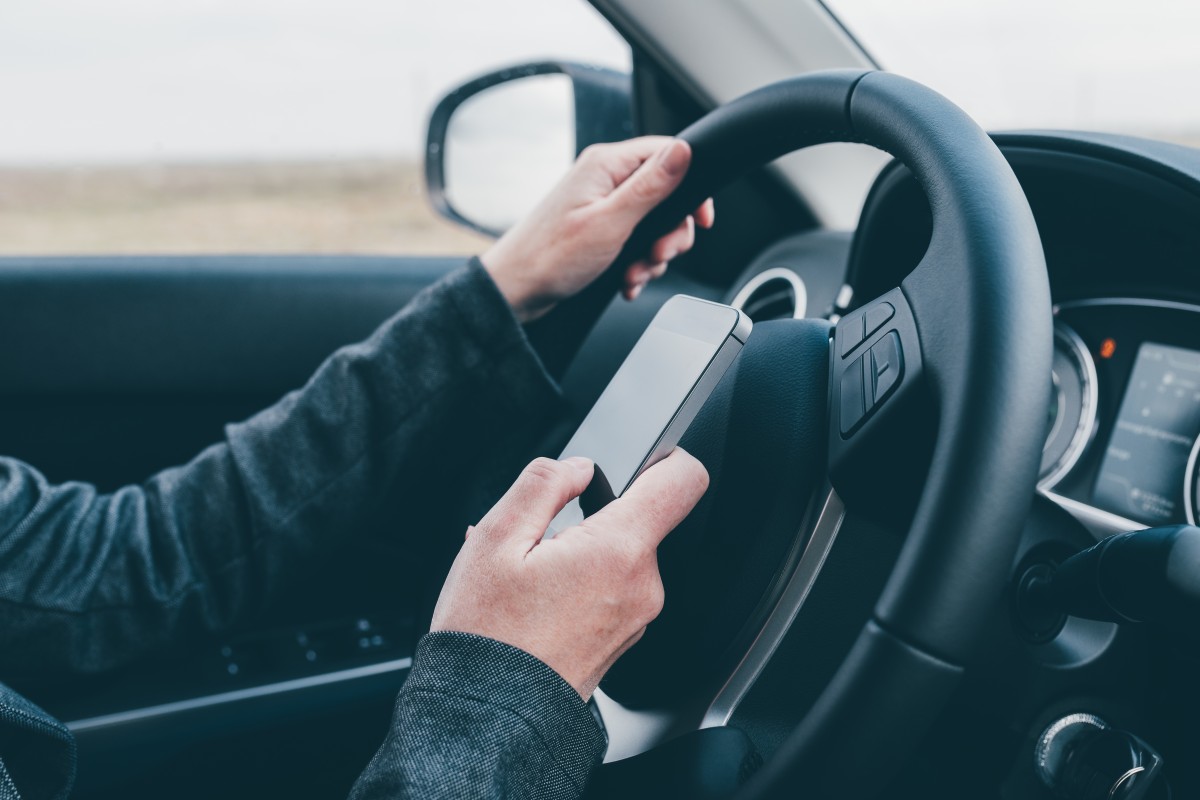Every year, there are millions (yes, millions) of vehicular accidents on American highways. According to the National Highway Transportation Safety Association, an estimated 31,720 people died in motor vehicle traffic crashes from January through September 2021; many of these crashes can be attributed to unsafe driving practices.
Unsafe driving practices can cost your organization in numerous ways, both financially and in terms of reputation. Keep reading to learn how unsafe driving impacts your business and how GPS tracking solutions can help!
Quick Links:
- What Is Unsafe Driving?
- The Costs of Unsafe Driving
- Improve Driving with These Benefits of GPS Tracking
What Is Unsafe Driving?
Unsafe driving involves a wide range of behaviors behind the wheel, including:
- Speeding
- Violating the right-of-way
- Turning improperly
- Following too closely
- Passing improperly
- Not using a seat belt
To be clear, unsafe driving is technically different from distracted driving, which involves activities that take a driver’s attention away from driving. Distracted driving includes changing the radio station, texting behind the wheel, eating or drinking, etc. Of course, distracted driving is equally dangerous and should be strictly discouraged when training your company’s fleet drivers—in 2019 alone, more than 3,000 people were killed due to distracted driving.
Making a habit of any of these driving behaviors greatly increases the danger posed to the driver, the driver’s passengers, other drivers on the road, pedestrians, and more.

The Costs of Unsafe Driving
If your fleet drivers have any dangerous driving habits or unsafe driving behaviors, then your business is at risk of facing the costs, which might include:
Driver Injuries or Fatalities
When drivers behave unsafely behind the wheel, one of the most important things being put at risk is those drivers—in fact, there were more than 900 injuries to truck drivers in 2018.
Driver injury or death is a tremendous loss to any organization. Not only do you lose a valued employee, but there are also safety investigations, workman’s compensation claims, and possibly even lawsuits to deal with—even if you’re doing everything right. Plus, the costs of hiring, training, and acclimating a new driver to the job can be high, and the costs can be even higher when you’re rushing the process.
Loss of the Vehicle
Another major blow to your organization is the loss of the vehicle that was being driven at the time of the crash. In a best-case scenario, the vehicle will only suffer minor or cosmetic damage and simply need a close inspection and some minor repairs to get it ready for the road again.
However, in a worst-case scenario, there could be major damage to the vehicle that would be so expensive to repair that simply replacing the asset would be more cost-effective. The specific cost of repairing or replacing your vehicle will depend on the type of vehicle that was damaged, but even replacing a small car can cost thousands, while larger vehicles can run tens of thousands of dollars.
Loss of Cargo/Tools
If the vehicle involved in the crash was a semi-truck with a full trailer, the losses your company could experience can be in the hundreds of thousands, perhaps millions of dollars.
Once again, a best-case scenario would just be light damage to whatever cargo your vehicle was moving, or maybe even simply a delay of delivery as the trailer waits to be hooked up to a different vehicle. The worst-case scenario would be the complete destruction or theft of the cargo following a traffic crash.
Even light utility trucks and vans can have valuable assets on them that can be lost or destroyed in a crash. For example, chemical containers and tools carried by street cleaning vehicles can be damaged in a collision, resulting in losses.
Loss of Reputation
Major vehicular crashes involving your organization’s vehicles can damage your public image, especially if your driver is at fault for the crash. The effects of this can be subtle and difficult to track, but every bit of negative publicity can undermine your efforts. Even if there isn’t an actual crash to worry about, just seeing unsafe driving by a car with your company’s logo on it is enough to impact public perception. This could lead to potential loss of business and generally associate your business with negativity.
Legal Expenses Arising from Damages
Unfortunately, the damage caused by unsafe driving and car accidents isn’t limited to the vehicle involved in the collision. Traffic crashes can cause damage to other vehicles, structures, and personal property, as well as cause injuries and fatalities to other motorists and pedestrians. For example, according to National Safety Council data, more than 6,000 pedestrians died in traffic accidents in 2019. The costs associated with these damages can be astronomical, to say the least. Even with top-notch insurance, the cost to your organization from legal fees and reimbursements can bite deeply into your financial assets.

Improve Driving with These Benefits of GPS Tracking
In addition to extensive driving training and refresher courses to remind drivers of good, courteous driving behaviors, GPS tracking solutions can help mitigate unsafe driving tendencies! GPS tracking solutions can empower you to:
Monitor Driver Behaviors
One way is to use GPS tracking systems to remotely monitor driver behaviors. Driving habits that can be monitored include:
- Sharp acceleration or harsh braking
- Fast cornering
- Stopping for railroad crossings
- And more!
Dangerous driving behaviors, such as excessive speeding and hard braking, can be easily identified from GPS data. With the data from a GPS tracker, you can see which of your drivers are behaving dangerously on the road and make sure they get the training they need to correct their bad habits.
Track Maintenance Patterns
Unsafe driving habits like speeding, sharp braking, fast cornering, and more all take a toll on the efficiency of your fleet vehicles. These excessive driving behaviors can increase fuel costs and accelerate maintenance schedules, which results in increased downtime and maintenance costs! With the power of GPS tracking, you can track maintenance patterns to get a feel for how often an average vehicle should be getting serviced—and address any anomalies within your fleet.
See Real-Time Locations
If your fleet drivers are exhibiting unsafe driving behaviors like speeding, it might be due to making personal errand runs while on their routes and having to make up for the lost time. By implementing a GPS tracking system, you can see the real-time locations of your fleet vehicles and confirm that your drivers are on track with their routes or intervene and get them back on track, if not. This helps ensure that your drivers are where they need to be and that they aren’t scrambling to make their next stop in time.
Partner with Rastrac to Improve Your Fleet’s Safety!
Since 1993, Rastrac has been entrusted to track more than $1.5 billion worth of assets around the world. With decades of experience and comprehensive GPS tracking solutions, you can rest easy knowing that our solutions help improve the safety of your fleet drivers and vehicles.





